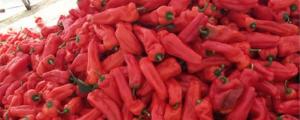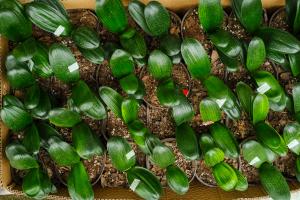How to Measure Plant Water Use Efficiency
Water is a precious resource for plants and the efficiency with which they use water is a critical component of their growth and survival. Measuring plant water use efficiency (WUE) is an important task for plant researchers and growers alike. In this article, we will take a closer look at how to measure plant water use efficiency and the tools and techniques used to do so.
What is Plant Water Use Efficiency?
Plant water use efficiency is a measure of the amount of biomass that is produced per unit of water used by the plant. It is calculated by dividing the biomass production by the amount of water used in the process. This measurement is used to understand how efficient plants are at using water to produce biomass, as well as to identify plants that are well-adapted to water-limited environments.
How to Measure Plant Water Use Efficiency?
There are several different methods for measuring plant water use efficiency, including:
Carbon Isotope Discrimination (CID) Method - This method measures the difference in the ratio of carbon isotopes between the plant and the air. It is based on the idea that plants with lower WUE will have a higher rate of water loss, leading to a higher carbon isotope discrimination. This method requires specialized equipment and expertise to perform.
Gas Exchange Method - This method involves measuring the rate of carbon dioxide uptake and water loss in the plant. This measurement can be used to calculate the plant's intrinsic WUE, which is the WUE under optimal growing conditions. This method requires specialized equipment and expertise to perform.
Lysimeter Method - This method involves growing plants in a closed system and measuring the amount of water that is required to maintain the system at a constant weight. This measurement can be used to calculate the plant's transpiration efficiency, which is the ratio of biomass production to water used. This method is relatively simple and can be used in both laboratory and field conditions.
Tools and Techniques for Measuring Plant Water Use Efficiency
There are several tools and techniques that can be used to measure plant water use efficiency, including:
Infrared Thermometer - This tool is used to measure the temperature of the plant's leaves, which can be an indicator of water stress. Plants under water stress will have higher leaf temperatures than those that are adequately watered.
Pressure Chamber - This tool is used to measure the plant's water potential, which is a measure of the plant's water status. This measurement can be used to determine if the plant is under water stress and to what extent.
Sap Flow Sensors - These sensors are used to measure the rate of water movement inside the plant's stem. This measurement can be used to determine the plant's transpiration rate and water use efficiency.
Conclusion
Measuring plant water use efficiency is an important task for plant researchers and growers. Understanding how to measure plant WUE and the tools and techniques used to do so can help us to identify plants that are well-adapted to water-limited environments, as well as to develop strategies for improving plant water use efficiency. By incorporating these methods into our research and growing practices, we can help to conserve water resources and ensure a sustainable future for our crops and ecosystems.

 how many times do yo...
how many times do yo... how many planted tre...
how many planted tre... how many pine trees ...
how many pine trees ... how many pecan trees...
how many pecan trees... how many plants comp...
how many plants comp... how many plants can ...
how many plants can ... how many plants and ...
how many plants and ... how many pepper plan...
how many pepper plan...





























